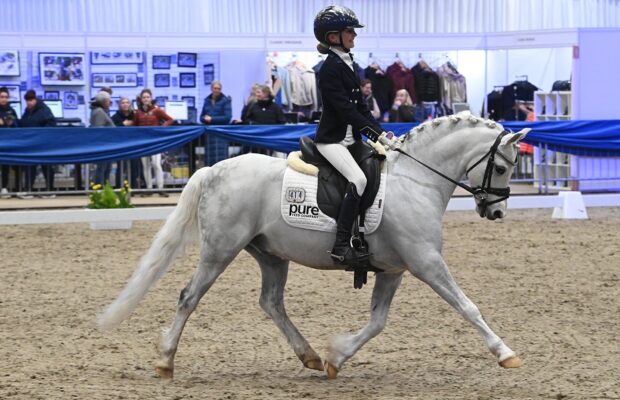While there isn’t a fast-track way to make you a better rider, lungeing sessions are the next best thing. Here are five expert tips that will transform the way you sit in the saddle
Learn how to lunge a horse with a rider on board and see how it could transform your riding:
1. Take away your stirrups
This is a quick way to see an improvement in your position. Have a neck strap and begin in walk, building up to trot and canter as you become confident and feel more balanced. “Riding without stirrups automatically puts you in a better position as the leg will naturally hang in the right place,” says Italian Olympic eventer Vittoria Panizzon, who regularly schools and hacks out without stirrups, and likes to remove riders’ stirrups when she is teaching. “It will also help strengthen your core.”
2. Lift your thighs off the saddle
It may seem tricky at first, but lifting your thighs off the saddle, stretching them back and then down, is a brilliant exercise to do on the lunge. “It gives the feeling of wrapping legs around the horse,” says Steph Lynn, a freelance riding instructor. “Riding without stirrups also helps improves confidence. It makes you more aware of your balance, whether you are compensating for your position in any way and encourages you to ride with a longer stirrup length.”
3. Raise your legs and bend your knees
Abi Hutton, dressage rider and senior instructor at Talland School of Equitation, recommends holding the pommel and lifting your legs away from the horse. Continue into trot and canter, moving your toes in and out and bending your knees. “It’s about keeping your core strong while being able to move your body around in the different paces,” explains Abi. “The only tight muscles in your body should be your tummy or fingers — the rest should be loose.”
4. Have a lunge lesson on a schoolmaster
According to international dressage rider Sara Gallop, who runs Summerhouse Equestrian Centre, this is a great way to improve your position without thinking about the horse. “Riders often fall into the trap of focusing on the horse, but usually fixing the rider will improve the horse’s way of going,” she says.
Like this? You might also enjoy reading these:
Jennie Loriston-Clarke: expert advice to solve your lungeing problems
5. Take away your reins

Knot your reins so that they sit on your horse’s neck. Place your hands on your hips or hold them out to the side. This helps soften your upper body. “If you can relax your shoulders and arms this follows through to the contact,” explains Sara. “You need a soft, mobile forearm in order to have an elastic contact.”




